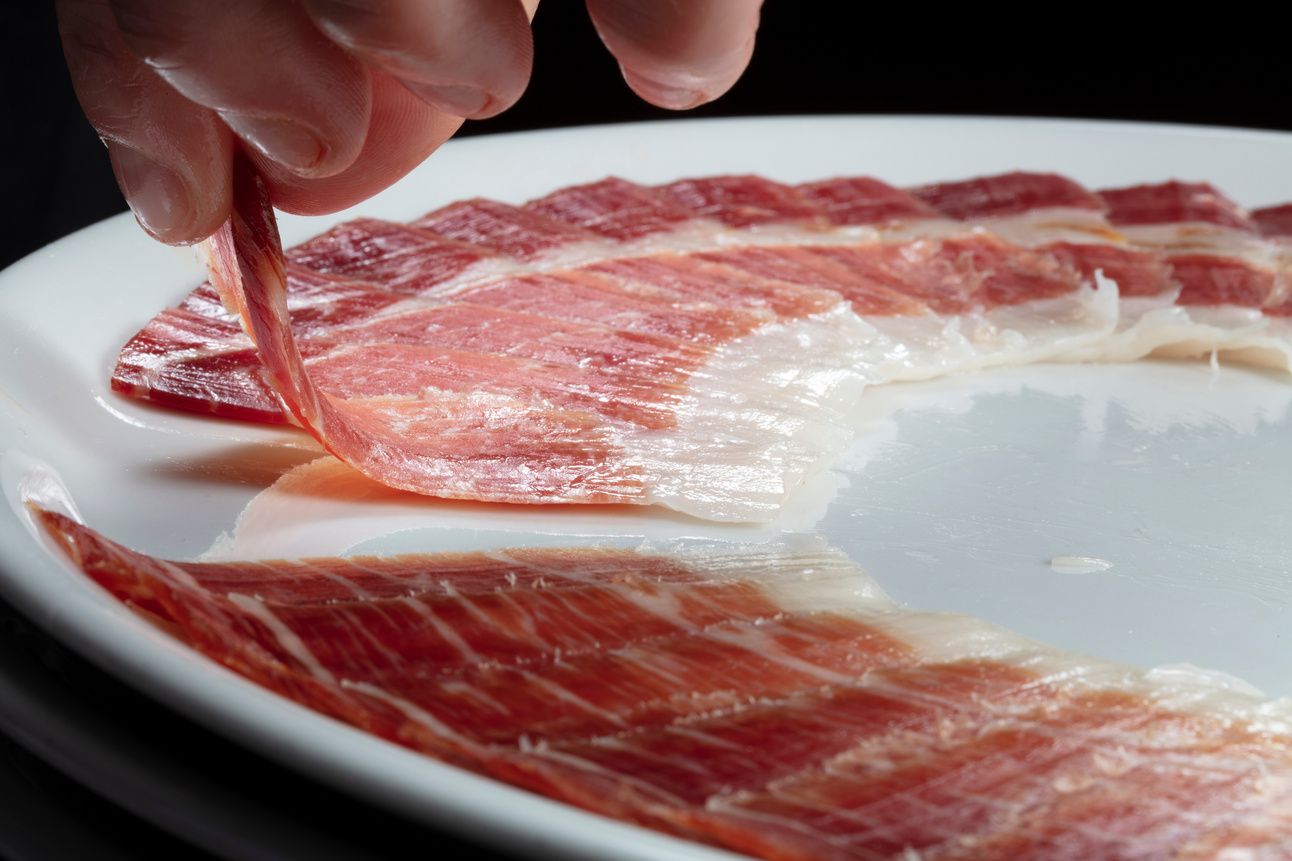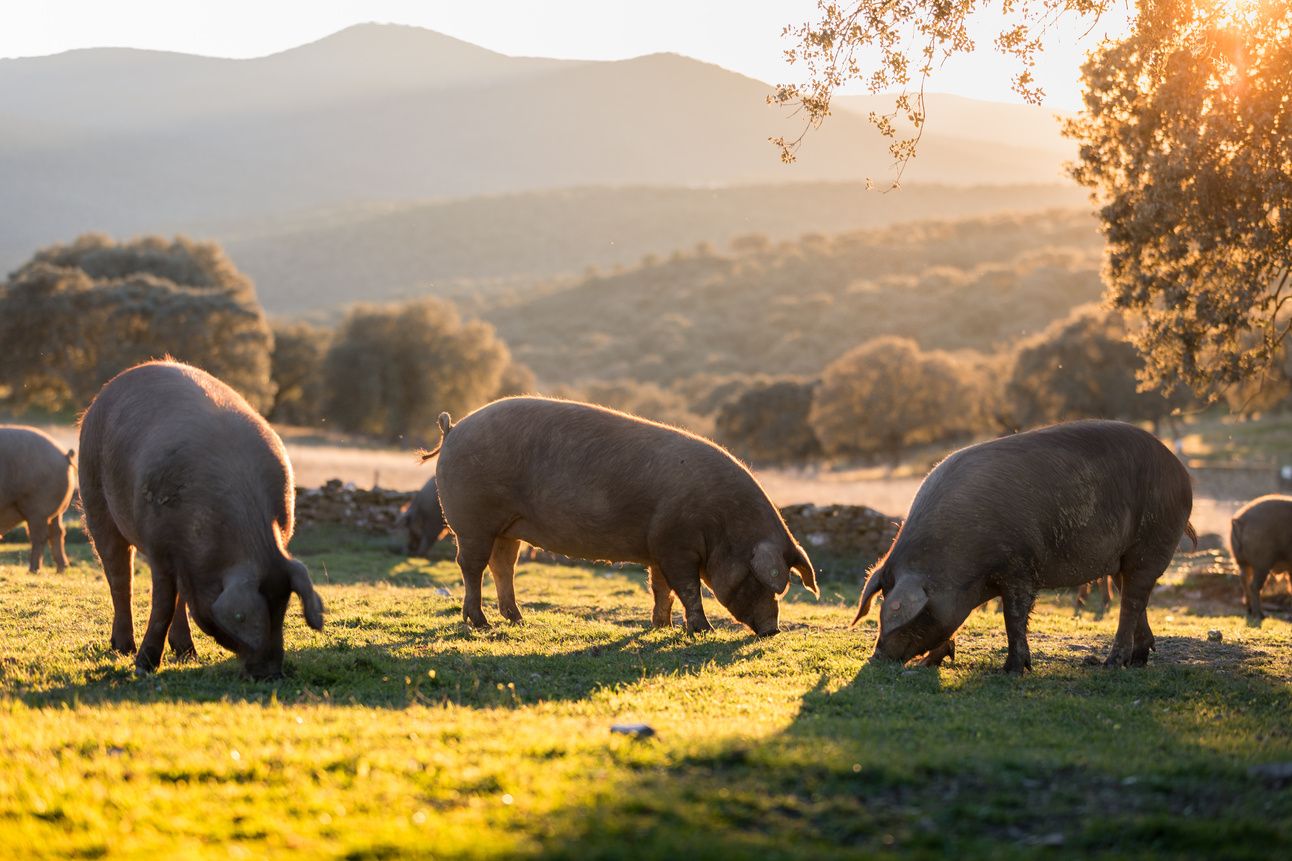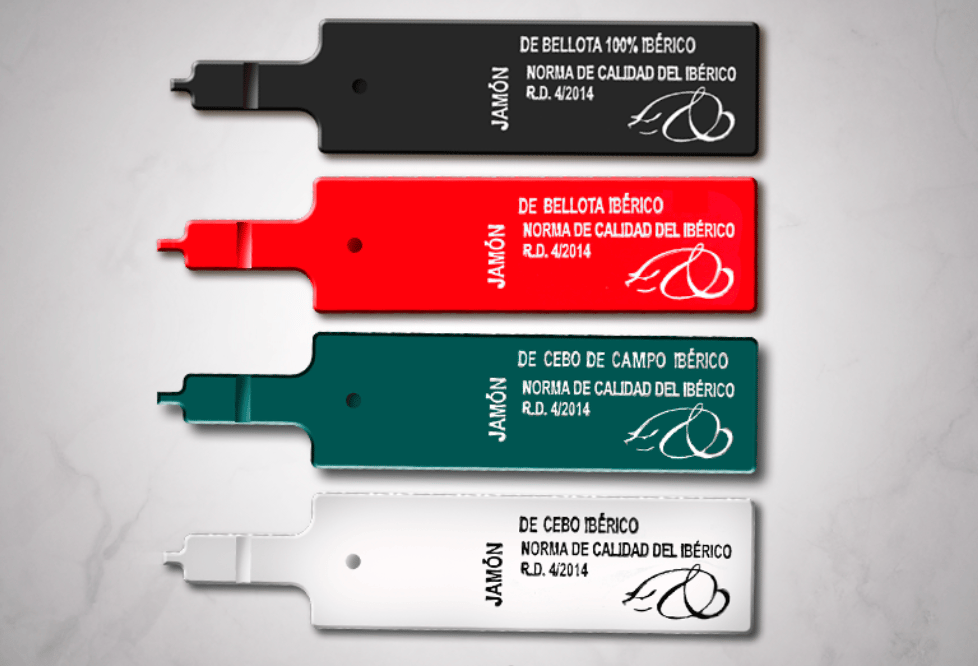- LA SOBREMESA
- Posts
- #3 What a €2.000 Leg of Jamón Ibérico Taught Me About Concentration
#3 What a €2.000 Leg of Jamón Ibérico Taught Me About Concentration
I was supposed to be learning... but all I could think about was that damn ham.

Back when I was studying Gastronomy and Culinary arts, at the Basque Culinary Center in San Sebastián, we had a masterclass about iberico pork, delivered directly by professionals from one of the most prestigious producers all over Spain -and obviously, the world-, Cinco Jotas. It was a full-on deep dive into Jamón Ibérico and all about the breed. Two or three hours of everything you could learn about it: genetics, curing, labels, tasting notes… Fascinating stuff.
But the thing I remember the most? The smell.
While the speakers delivered their talk on stage, a professional jamonero stood quietly to the side, carving an entire leg of Cinco Jotas into hypnotic plates, covered with perfect slices, forming beautiful spirals. I was sitting all the way at the back of the auditorium, but from the second he made the first cut… I could smell it. A warm, nutty, intense aroma slowly took over the room.
It was magical. And also kinda torturous. Because while we were supposed to be taking notes on pH levels and acorn-fed diets, we were all secretly tracking every move of that knife.
Let’s find out why jamón ibérico is one of my favorite products on earth.

About the breed 🐽🤌
Jamón ibérico comes from a unique breed of pig, native to the Iberian Peninsula (yes, Portugal also produces this masterpiece). The purest version - the one with the black label - comes from 100% Iberian pigs fed on acorns (bellotas) and raised free-range in the dehesa. These pigs don’t just taste different. They are different.
Their meat is naturally marbled, their fat melts at body temperature, and their genetics allow them to store fat in a way no other pig does.
Oh, and they’re healthier, too.
Their fat is rich in oleic acid—the same heart-healthy fat found in olive oil. Thanks to their acorn-rich diet, the meat is also packed with natural antioxidants and good cholesterol.
Basically, it’s pork that loves you back… And the flavour? Omg.

The color code (a.k.a. how to not get scammed at the deli)
Spain has a system of colored labels to help you decode what kind of jamón ibérico you’re buying. This labels tell you everything you need to know about the pig: how it lived, what it ate, and even who its parents were. Here's the cheat sheet:
Black label:
DE BELLOTA 100% IBERICO.
The top of the top. Both mother and father are purebred Iberian pigs (certified in the official registry), raised free in the dehesa and fattened on acorns and natural forage. This is the leg you show off to your in-laws.
Red label:
DE BELLOTA IBÉRICO.
Same acorn-rich diet, same happy dehesa life, but the pig isn’t 100% Iberian—usually 75% or 50%. Still luxurious, still delicious.
Green label:
DE CEBO DE CAMPO IBÉRICO.
These pigs (100%, 75%, or 50% Iberian) are raised in the countryside and eat a mix of pasture and feed. Think of it as a rural pig with a balanced diet and decent views.
White label:
DE CEBO IBÉRICO.
Farm-raised and fed on grain, cereals, and legumes. Really not bad—but if you’re coming to Spain for jamón, this shouldn’t be your first bite.
The Art of Time
Some of the best things in life just get better with time, right?
The best Jamón Ibérico is cured for up to 4 years. In that time, the leg loses nearly half its weight, but gains a complexity that rivals fine cheese or wine: nutty, buttery, umami-rich… with a whisper of acorn sweetness if you’re lucky.
How to enjoy it
Forget cooking. Jamón Ibérico is best served as is. Room temperature, ideally sliced by hand. Pair it with a glass of dry sherry, or cava, or why not with a fresh beer… A little crusty bread, maybe some tomato - but never, ever drown it in other strong flavors.
Let the jamón speak.
That said… Yes. There are hundreds of recipes in Spain where jamón ibérico is used. And honestly, I’m the first one experimenting with it all over my cookbook (still a handwritten dirty and old notebook, but hopefully one day available for all of you 🥵😂).
Just keep in mind not to dry it too much, or the saltiness will take over all the flavor. How? Check out how I make these Croquetas de Jamón Ibérico preserving all the natural flavours, aroma, and saltiness exactly as it should be:
📬 PS: If this made you hungry, I did my job. If you’ve never tasted black-label Jamón Ibérico… maybe it’s time to add it to your bucket list.
RECIPE OF THE WEEK
PATATAS BRAVAS (TWO SAUCES)
If you haven’t yet, it is mandatory to read last weeks’ article, where I explain the basics of this iconic tapa, together with some of the ways chefs innovate with it all over Spain. You may want to also feel creative and give a twist to the recipe ‘‘your way’’ 🫠
Salsa brava
The original salsa brava should always start with a sofrito of olive oil, garlic and onion. Poach all together for around 10’ so the veggies lose most of its humidity. Add the cayenne, stir fry for another 5 minutes, and add both paprikas and the flour. Cook for 5 more minutes. Add the broth and stew the whole thing for another 5 to 10 minutes. The better the broth, the better the sauce, as usal. Blend and bring it to a boil again to recover the original colour, and fix the texture with some cornstarch dissolved in cold water if needed. But remember, the texture when warm is always more fluid than when it cools down. | Fake allioli
You could do this by hand, for sure. Sometimes I do it just to remind myself that I can (😂). But if you got a hand blender and no time for bullsh*t, just drop all the ingredients on a jar and emulsify by blending first from the bottom, without moving, until you see the mayonnaise starting to appear from the blender. Then, slightly move the blender up and down to mix the whole thing properly. Easy AF. IMPORTANT: All the ingredients should be at room temperature, otherwise the emulsion may break. |
Remember that you can see a full explanation video of both sauces and the frying here:
Reply